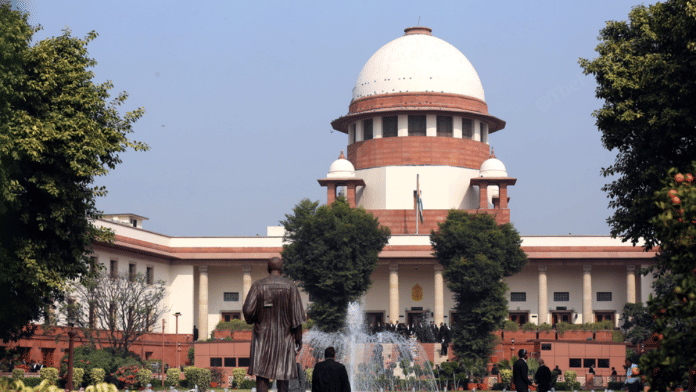With the stroke of a pen and the force of law, the Supreme Court delivered a landmark judgment in the Rajive Raturi vs Union of India case on 8 November last year, potentially transforming the future of approximately 2.68 crore Indians with disabilities—and especially for the student community. Of the total 4.3 crore students enrolled in higher education institutions (HEIs) in India, only 88,748—just 0.2 per cent—are students with disabilities, far below the mandated 5 per cent reservation.
This is nearly 30 years after the legislature first enshrined accessibility into law—initially in 1995 through the Persons with Disabilities Act, and then two decades later with the Rights of Persons with Disabilities Act, 2016. By 2024, the judiciary determined it was time to take matters into its own hands.
The Supreme Court found that the rules established in 2017 to guide the implementation of the RPwD Act contradicted the Act’s legislative intent. The court emphasised that Rule 15 reduced the Act to self-regulatory guidelines rather than a binding legal obligation, turning the right to accessibility into a distant dream.
The Supreme Court’s landmark ruling has the potential to transform disability rights in India. By directing the Union to establish mandatory accessibility standards, the court elevated accessibility from an aspiration to a constitutional imperative. It firmly declared, “Accessibility is not merely a convenience, but a fundamental requirement for enabling individuals, particularly those with disabilities, to exercise their rights fully and equally.” The November 2024 decision transformed the RPwD Act from a set of voluntary guidelines into binding law, requiring essential services and spaces—from educational institutions and medical facilities to workplaces and civic venues—to become accessible for disabled persons.
Systemic barriers
Despite progress in benefiting marginalised groups, India has struggled to make its educational institutions truly inclusive for people with disabilities. The statistics paint a bleak picture of exclusion: while 19.3 per cent of students with disabilities complete higher secondary education, only 0.20 per cent of the total student population accesses higher education. This dramatic drop represents tens of thousands of unfulfilled dreams—students whose academic journeys are cut short not by a lack of capability, but by systemic barriers.
From inaccessible physical infrastructure and digital platforms to untrained faculty and deep-rooted attitudinal biases, the learning environments at Indian universities show that the constitutional promise of equal opportunity in education remains a distant dream.
The Supreme Court directive signals an end to institutional inaction. Universities can no longer treat accessibility as optional. The judgment establishes clear enforcement mechanisms, including financial penalties for non-compliance, ranging from Rs 10,000 for a first offence to Rs 5 lakh for repeated violations. Institutions may also face suspension of grants, affiliations, completion certificates. Therefore, to operate in India’s higher education landscape, institutions must now transform accessibility from a matter of charity or goodwill into a fundamental requirement.
Also read: Disability rights intersect with economy, commerce, health. Policy should reflect that
An opportunity
For our country’s higher education institutions, the Supreme Court ruling presents both a mandate for urgent change and an opportunity to reimagine campus accessibility. There is no denying the immediate challenges arising from this directive. The HEIs will need to conduct detailed accessibility audits, act on recommendations for improvement, train faculty and staff, sensitise students, implement monitoring systems, and allocate sufficient funds for accessibility compliance. Yet, this is also a chance for early movers to emerge as leaders in inclusive education.
With only a handful of Indian students with disabilities enrolled in higher education, institutions that move swiftly can gain a competitive advantage by attracting a previously untapped talent pool. Leading HEIs will not only enhance their reputations but also stand to gain a significant advantage by securing a larger share of the approximately 22 lakh seats mandated by the 5 per cent reservation requirement. Ultimately, by creating diverse and accessible learning environments, institutions can strengthen the quality of education for all students.
The path to accessibility requires a strategic approach—beginning with audits that evaluate not just physical infrastructure but also digital platforms, learning materials, and support services. These assessments cover accessible toilets with grab bars, laboratory layouts, website compatibility with screen readers, and more. They also examine the university’s hiring of trained scribes and sign language interpreters.
To get a better sense of the magnitude of this ruling, consider the 2.68 crore Indians with disabilities left behind. This number exceeds the combined populations of New York state and Washington, DC. Imagine the outcry if American universities excluded entire regions from higher education. The Supreme Court’s decision, mandating a shift from voluntary guidelines to legal obligations, finally gives teeth to India’s accessibility laws. Its success now depends on how institutions respond.
Universities that treat this as mere checkbox compliance risk financial penalties, missing the opportunity to tap into a vast talent pool and taking the lead in inclusive education. It is time for our universities to open doors—literally and figuratively—to students with disabilities. Not just because it’s the law, but because our country’s future is brighter and more hopeful when every capable mind gets a chance to thrive.
Tarini Mohan is Manager, Disability Inclusion in Higher Education at 9.9 Education. Pramath Raj Sinha is the Founder and Chairperson of the Board of Trustees at Ashoka University. He tweets @PramathSinha.
Views are personal.
(Edited by Aamaan Alam Khan)






